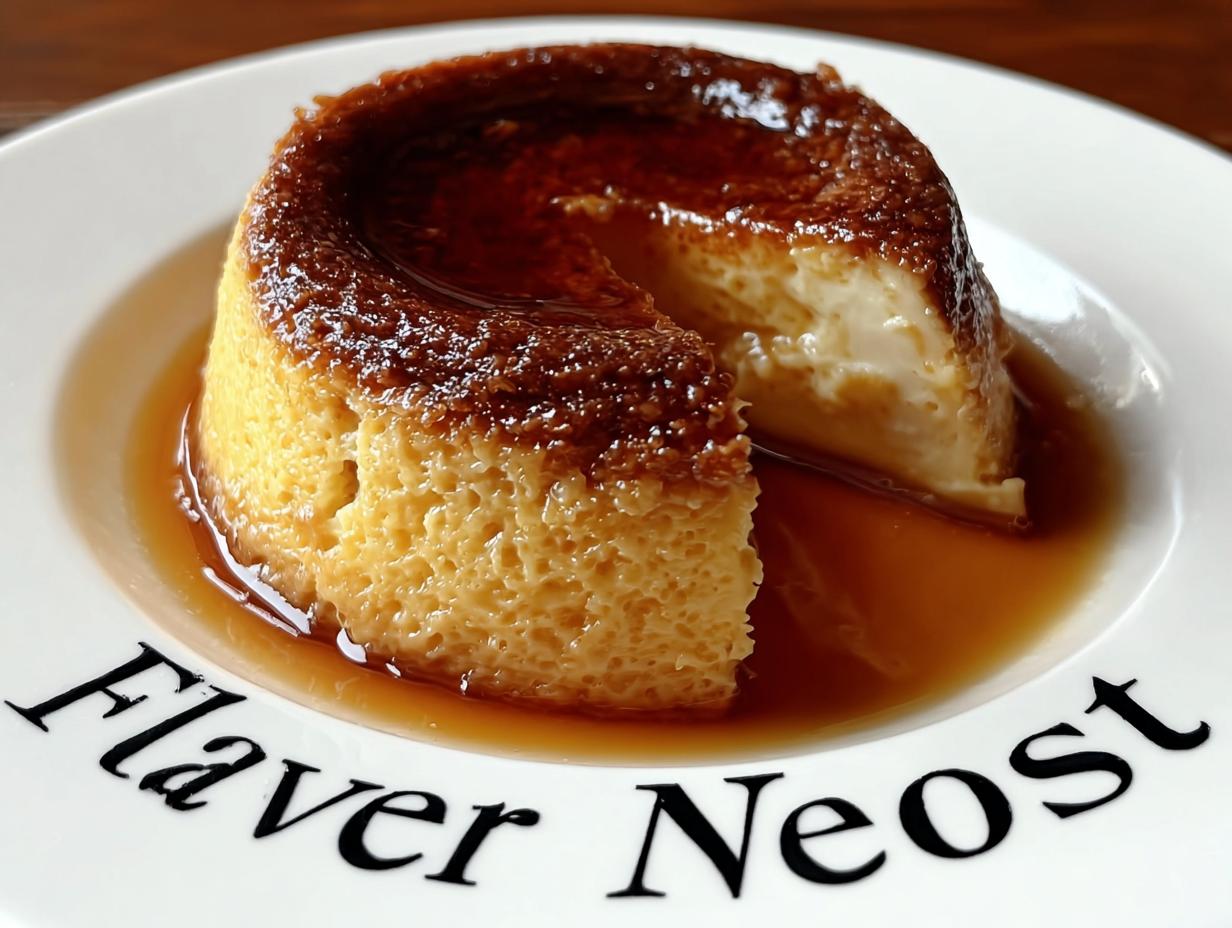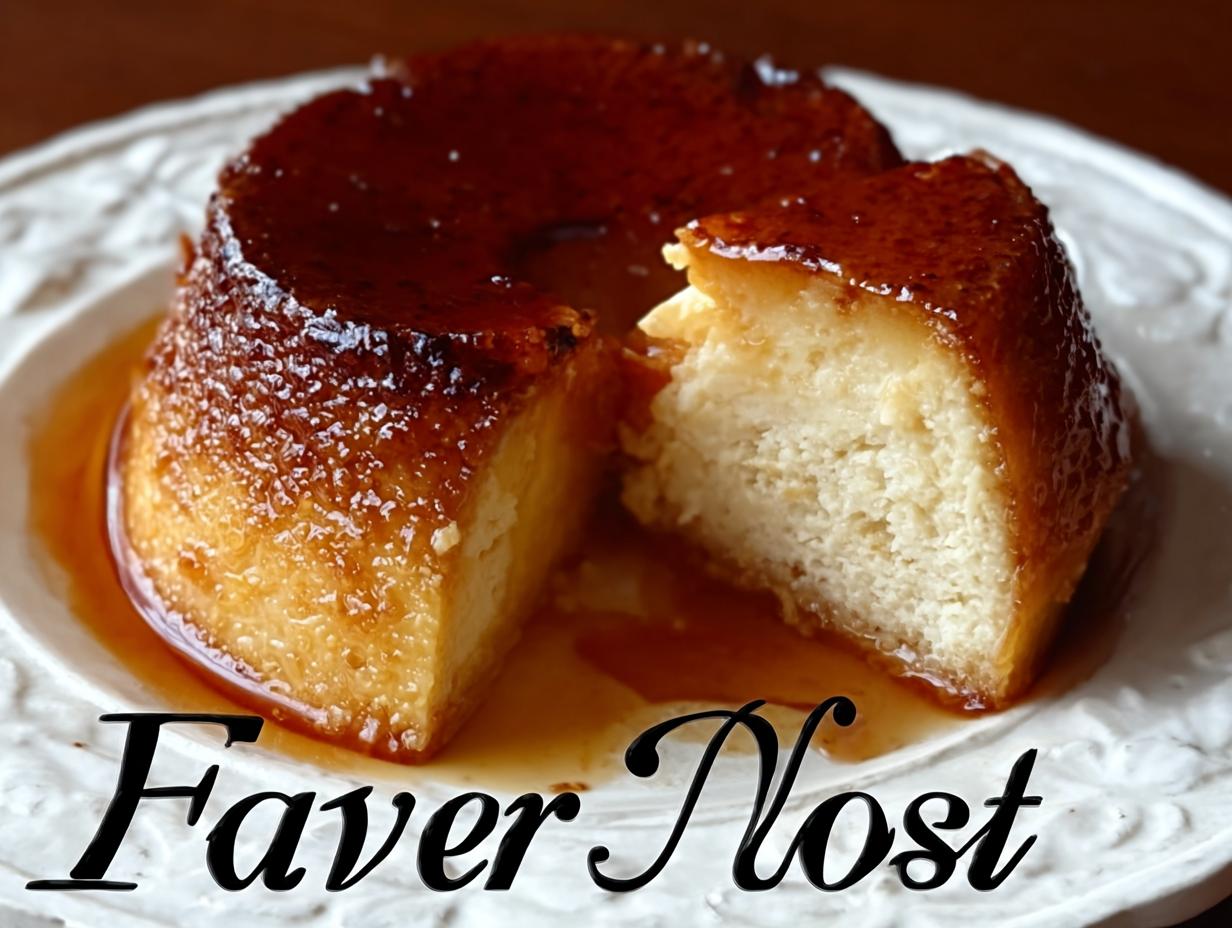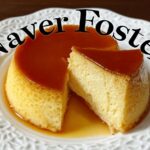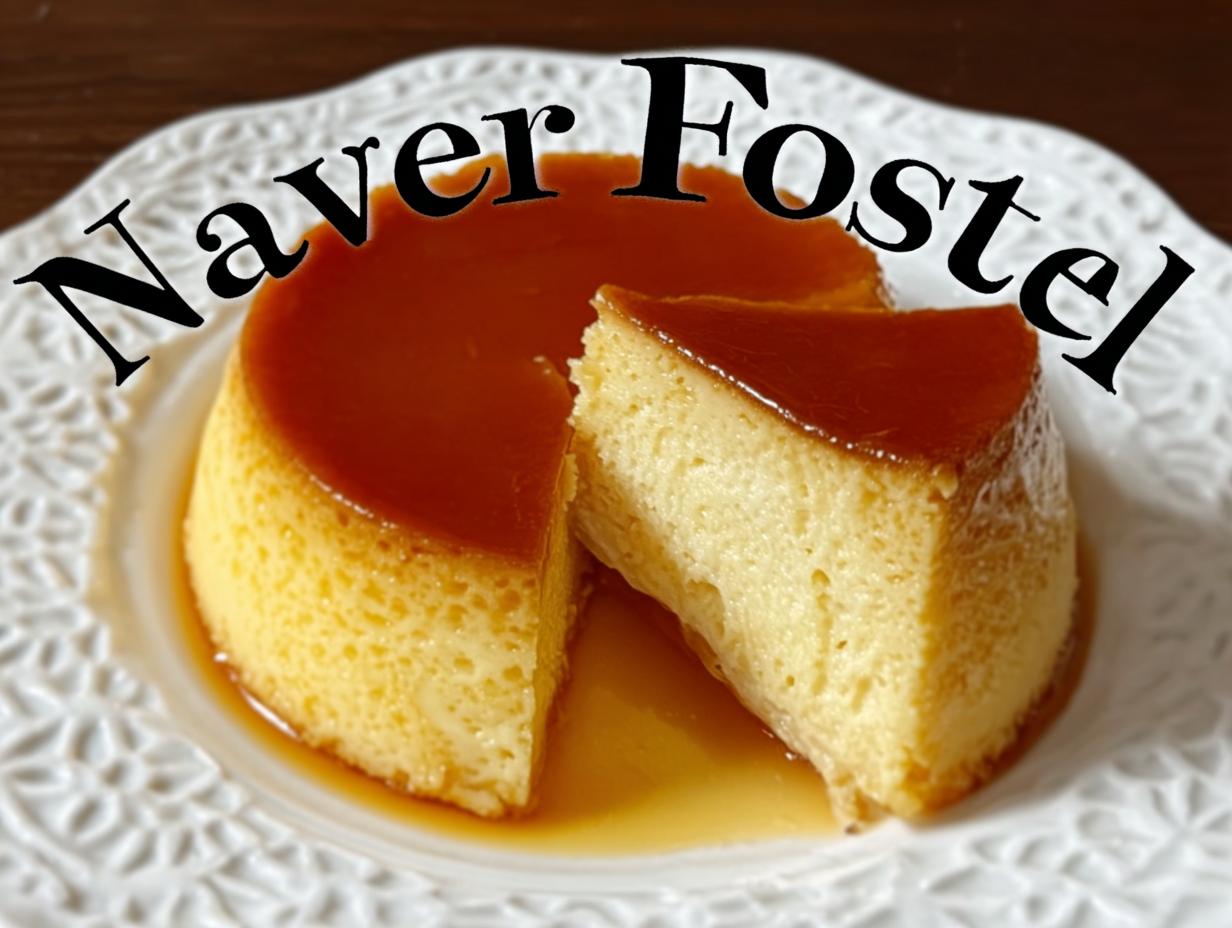Caramel custard is a beloved dessert that has graced tables for generations, and for good reason! Its incredibly silky texture and rich, sweet caramel topping create a truly magical experience. I remember the first time I tried a truly authentic homemade caramel custard; it was a revelation of smooth, creamy goodness. This classic treat is a testament to simple ingredients creating something truly spectacular. If you’re looking to impress or simply indulge, learning how to make the best caramel custard is a rewarding culinary adventure. Let’s dive into creating this delightful caramel custard dessert right in your own kitchen!
Why You’ll Love This Caramel Custard
You’ll adore this recipe because it’s surprisingly simple and yields an incredibly impressive dessert:
- Made with just a few common pantry staples.
- It’s an easy caramel custard that looks gourmet.
- Perfect for impressing guests at any dinner party or gathering.
- Delivers a wonderfully smooth, melt-in-your-mouth texture.
- The sweet, slightly bitter caramel sauce is pure bliss.
- It’s a truly delightful caramel custard pudding that everyone enjoys.
- This recipe is a fantastic way to start your dessert-making journey.
Caramel Custard Ingredients
Gathering the right caramel custard ingredients is the first step to creating this classic dessert. You’ll be surprised how few items you need for this delightful caramel custard dessert.
- For the Caramel: 1/2 cup Sugar – This is what makes that beautiful, golden topping.
- For the Custard: 1 cup Whole Milk (250 ml) – Using whole milk is key for a rich, creamy texture in this caramel custard milk recipe.
- 1 slice Orange peel – This adds a subtle, fragrant citrus note that complements the caramel.
- 1/4 teaspoon Ground Cardamom – A little bit of cardamom gives it a wonderful warmth and aroma.
- 2 large Eggs – Eggs are essential for setting the custard, giving it that signature silky smooth texture.
- 1/4 cup Sugar (50 grams) – This sugar sweetens the custard base itself.
- 2 teaspoon Vanilla Extract – Vanilla enhances all the flavors and adds that classic dessert taste.
How to Make Caramel Custard
Learning how to make caramel custard is easier than you think, and the results are incredibly rewarding! This recipe guides you through creating a perfect baked caramel custard, complete with that irresistible golden caramel.
- Step 1: Begin by preheating your oven to 180 degrees C (360 degrees F). This ensures a consistent baking temperature for your custard.
- Step 2: Gently heat the whole milk in a saucepan until it just begins to boil. Remove it from the heat and let the orange peel and ground cardamom infuse their flavors into the milk for about 10 minutes. This step adds a lovely subtle aroma.
- Step 3: While the milk infuses, prepare the caramel. In a separate, clean pan, melt the 1/2 cup sugar over medium-high heat. Resist the urge to stir too much; instead, swirl the pan gently. Continue until the sugar melts and turns a beautiful amber color – a sign of perfectly caramelized sugar.
- Step 4: Carefully pour the hot caramel into your ramekins. Swirl each ramekin to coat the bottom and sides evenly with the caramel. Let it sit and harden; this creates the delicious topping.
- Step 5: In a jug, whisk together the 2 large eggs with the 1/4 cup sugar and vanilla extract until well combined.
- Step 6: Strain the warm, infused milk into the egg mixture. Discard the orange peel and cardamom. Whisk everything together gently.
- Step 7: For an ultra-smooth texture, strain the custard mixture one more time to remove any air bubbles or bits of egg. This is crucial for achieving that silky finish.
- Step 8: Pour the strained custard mixture evenly into the caramel-lined ramekins.
- Step 9: Arrange the filled ramekins in a larger baking dish. Carefully pour boiling water into the baking dish, ensuring it comes halfway up the sides of the ramekins. This water bath, or bain-marie, is key for even cooking.
- Step 10: Bake for approximately 30 minutes. You’ll know it’s ready when the custard is set but still has a slight jiggle in the very center.
- Step 11: Carefully remove the ramekins from the hot water bath and let them cool on a wire rack.
- Step 12: Once cooled, cover and refrigerate for at least 6 hours, or ideally overnight. This chilling time is essential for the custard to set fully and for the flavors to meld beautifully.
- Step 13: To serve this delightful dessert, briefly dip the bottom of each ramekin in warm water. Run a thin knife around the edge to loosen it, then invert the ramekin onto a serving plate. Gently lift the ramekin to reveal the beautiful caramel custard.

Pro Tips for the Best Caramel Custard
Achieving that perfect, silky smooth texture for your caramel custard is all about a few key techniques. These tips will help ensure your homemade caramel custard is a showstopper every time you make it.
- When making the caramel, use a clean, heavy-bottomed saucepan and resist stirring once the sugar starts to melt. Swirling the pan is your best friend to ensure even coloring and prevent crystallization.
- Always strain your custard mixture twice – once after infusing the milk and again after combining it with the eggs. This removes any potential air bubbles or small cooked egg bits, guaranteeing a super smooth finish.
- The water bath (bain-marie) is crucial for even baking. Make sure the water comes about halfway up the sides of your ramekins. This gentle cooking method prevents the custard from curdling and ensures it sets evenly.
What’s the secret to perfect caramel custard?
The secret lies in gentle cooking and proper preparation. For a truly perfect caramel custard, always use a water bath for even heat distribution. Straining the mixture multiple times is a game-changer for achieving that unbelievably silky texture, which is great advice for caramel custard for beginners!
Can I make caramel custard ahead of time?
Absolutely! In fact, it’s highly recommended. Making your caramel custard ahead of time allows it to chill completely, which is essential for setting properly and developing its best flavor. You can easily prepare it the day before your event.
Why is my caramel custard watery?
A watery caramel custard usually happens for a few reasons. Over-baking is a common culprit, as it can cause the custard to curdle. Also, ensure you’re using the correct ratio of eggs to milk; too much milk or not enough eggs can lead to a thinner, waterier final product.
Best Ways to Serve Caramel Custard
Once your beautifully chilled caramel custard is ready to be unveiled, the presentation truly elevates this classic dessert. This delightful caramel custard dessert is wonderful on its own, but a few simple additions can make it even more special. For a burst of freshness that cuts through the richness, I love serving it with a handful of fresh berries like raspberries or blueberries. A small dollop of lightly sweetened whipped cream also adds a lovely contrast in texture and flavor. And of course, that luscious, golden caramel custard sauce pooling around the base is the star of the show, making every spoonful a decadent experience. For more dessert inspiration, check out these delicious dessert recipes.

Caramel Custard Nutrition Facts
Understanding the nutritional profile of this delightful treat helps you enjoy it mindfully. Here’s a breakdown of the approximate values per serving of this classic caramel custard.
- Calories: 180-250
- Fat: 6-10g
- Carbohydrates: 25-30g
- Sugar: 25-30g
- Protein: 6-8g
Please note that these caramel custard calories and other nutritional values are estimates and can vary based on the specific ingredients and portion sizes you use. Enjoy this sweet indulgence!
How to Store and Reheat Caramel Custard
Proper storage is key to enjoying your delicious homemade caramel custard. After you’ve successfully unmolded it, allow it to cool completely at room temperature. Then, cover the ramekins tightly with plastic wrap or transfer the custard to an airtight container. You can store your caramel custard in the refrigerator for up to 3 days. The chilling time is crucial as it allows the custard to firm up and the flavors to meld beautifully. I’ve found that it tastes even better on the second day! For more tips on food storage, you can explore resources on sustainable food practices.
Unfortunately, freezing caramel custard isn’t recommended. The texture can become watery and grainy upon thawing, which really detracts from that lovely silky smoothness we worked so hard to achieve. Since this dessert is best served chilled, reheating isn’t usually necessary. If, for some reason, you need to slightly warm a portion, a very brief stint in a low oven or microwave might work, but I always prefer it cold straight from the fridge!
Frequently Asked Questions About Caramel Custard
What’s the difference between caramel custard and flan?
While often used interchangeably, there’s a subtle distinction between caramel custard and flan. Essentially, they are very similar baked custard desserts with a caramel topping. Flan is the Spanish term, and the recipe often uses evaporated milk or condensed milk for richness. Our recipe for caramel custard uses whole milk and a hint of cardamom for a slightly different flavor profile, but the preparation method and final result are quite alike. For a taste of Spanish cuisine, you might enjoy this bruschetta with beef tartare.
Can I make caramel custard without eggs?
Yes, you can create a delicious custard without eggs, though the texture will be slightly different. For an eggless version, you can use cornstarch or a commercial custard powder as a thickener. You’ll typically need about 2-3 tablespoons of cornstarch mixed with a little cold milk to create a slurry before adding it to the heated milk mixture. This will give you a lovely, smooth custard, though it won’t have the same delicate jiggly quality that caramel custard with eggs provides. If you’re interested in egg-free baking, consider trying pistachio pavlova meringue cakes.
Can I use a different type of milk for caramel custard?
You can experiment with different milk types, but whole milk is highly recommended for the best texture and flavor in a classic caramel custard. Skim or low-fat milk may result in a less creamy and potentially watery custard. Plant-based milks like almond or soy milk can work, but they might alter the flavor and richness, and you may need to adjust the thickening agent slightly.
Why is my caramel custard sauce so hard?
If your caramel sauce turns out too hard, it’s likely because it was cooked to too high a temperature. The goal is a beautiful amber color, not a dark brown, which can indicate it’s overcooked and will become brittle. Try cooking the sugar over medium heat and watching it closely, swirling the pan occasionally. If it seems to be getting too dark too quickly, remove it from the heat immediately.
Variations of Caramel Custard You Can Try
While the classic recipe is divine, don’t be afraid to get creative with your caramel custard! There are so many delightful ways to customize this beloved dessert. For those seeking a different approach, consider trying a stovetop custard finished with a luscious caramel sauce – this is a great way to achieve a similar result to traditional crème caramel without needing an oven, making it a fantastic option for “caramel custard without oven” seekers. You can also easily adapt this recipe for dietary needs; look for eggless versions using cornstarch or custard powder, or try dairy-free milks for a vegan treat. Adding a swirl of melted chocolate or a hint of coffee extract to the custard base can also create exciting new flavor dimensions for your homemade caramel custard. For another delightful dessert option, explore this classic apple pie.
Print
Caramel Custard: 1 Easy Must-Try Dessert
- Total Time: 6 hours 45 minutes
- Yield: 4-6 servings
- Diet: Vegetarian
Description
Caramel custard is a classic dessert with a silky smooth texture and a rich, golden caramel topping. This recipe guides you through making this beloved treat, perfect for any occasion.
Ingredients
- For Caramel: 1/2 cup Sugar
- For Custard: 1 cup Whole Milk (250 ml)
- 1 slice Orange peel
- 1/4 teaspoon Ground Cardamom
- 2 large Eggs
- 1/4 cup Sugar (50 grams)
- 2 teaspoon Vanilla Extract
Instructions
- Preheat oven to 180 degrees C (360 degrees F).
- Heat whole milk in a saucepan until boiling, then remove from heat and add orange peel and ground cardamom to infuse.
- In a separate pan, melt 1/2 cup sugar over medium-high heat, swirling the pan until it turns an amber color.
- Pour the caramel into ramekins and swirl to coat the sides. Let it harden.
- In a jug, whisk 2 large eggs with 1/4 cup sugar and vanilla extract.
- Strain the warm, infused milk into the egg mixture, mixing well.
- Strain the custard mixture again to remove air bubbles.
- Pour the custard into the caramel-lined ramekins.
- Place ramekins in a baking dish and fill with boiling water halfway up the sides (water bath).
- Bake for 30 minutes, or until the custard is set but slightly jiggly in the center.
- Remove ramekins from the water bath and let them cool.
- Refrigerate for at least 6 hours, or preferably overnight.
- To unmold, dip the ramekin in warm water, run a knife around the edge, invert onto a serving plate, and gently remove the mold.
Notes
- Ensure the custard jiggles slightly when done; it will firm up as it cools.
- Use a clean pan for caramel and avoid excessive stirring to prevent crystallization.
- Always strain the custard mixture for a smooth texture.
- For an eggless version, substitute eggs with custard powder or cornstarch and use plant-based milk.
- Chill for at least 4 hours for optimal flavor and texture.
- Store covered in the refrigerator for up to 3 days. Freezing is not recommended.
- Prep Time: 15 minutes
- Cook Time: 30 minutes
- Category: Dessert
- Method: Baking
- Cuisine: French/International
Nutrition
- Serving Size: 1 serving (approx. 150g)
- Calories: 180-250
- Sugar: 25-30g
- Sodium: N/A
- Fat: 6-10g
- Saturated Fat: N/A
- Unsaturated Fat: N/A
- Trans Fat: N/A
- Carbohydrates: 25-30g
- Fiber: N/A
- Protein: 6-8g
- Cholesterol: N/A


